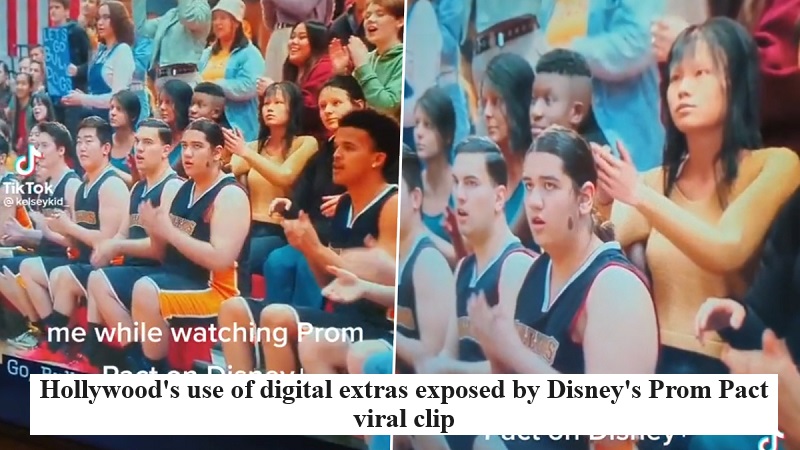
In late March, Disney released the romantic comedy “Prom Pact” on its platforms, and it initially appeared as just another teenage-oriented TV movie, receiving modest attention. However, seven months down the line, the film unexpectedly became the epicenter of a viral storm, but not for the reasons one might expect.
The controversy began with the emergence of a snippet from the film’s opening pep rally scene, which found its way onto the internet. In this brief moment, viewers were confronted with an unusual sight: digital humans, looking rather unrealistic, enthusiastically cheering amidst real background actors in the bleachers.
This peculiar contrast swiftly grabbed the internet’s attention, leading to widespread sharing and, inevitably, mockery.
Yet, there is a deeper issue at play here. The viral clip touched upon a more significant and urgent concern in Hollywood – the ongoing SAG-AFTRA strike. This strike fundamentally revolves around the apprehension that actors’ likenesses could be digitally recreated without their proper consent and just compensation. Background actors, in particular, are anxious that their work, which usually spans days or even weeks on a production, might be condensed into a mere day if studios opt to digitally insert their likenesses into scenes.
The release of the romantic comedy “Prom Pact” in late March went by relatively unnoticed, fitting the mold of another teen-focused TV film. However, after seven months, it became an unexpected focal point of a viral controversy, with an unusual clip from the film’s opening pep rally scene gaining widespread attention and becoming the subject of ridicule.
Beneath this seemingly frivolous viral sensation lies a far more profound concern – the ongoing SAG-AFTRA strike in Hollywood. At its core, this strike revolves around the profound fear that actors could have their likenesses recreated digitally without their proper consent and without receiving the fair compensation they deserve. Background actors, in particular, harbor concerns that their labor, which would traditionally encompass days or even weeks on a production, could be significantly reduced to a single day if studios decide to insert their digital counterparts into scenes.

Post Your Comments